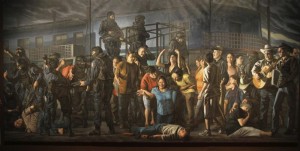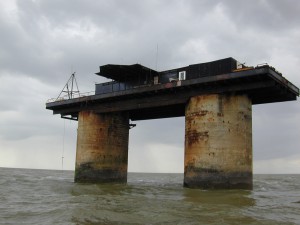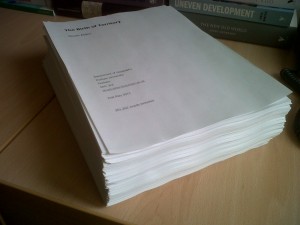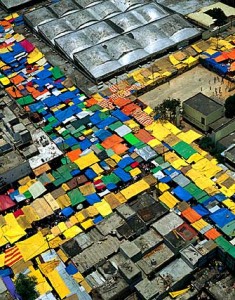 The new issue of Development Dialogue has a great line up of authors and speaks to a lot of issues I’m thinking about. Its main title is “The End of the Development-Security Nexus.” I’ve been reading some of the lit on the development-security nexus for a paper I’m working on about how Colombia’s drug-trafficking paramilitaries mobilized discourses of grassroots development in stealing and laundering land. The historical renditions of how development and security became conflated all share what seems to me a significant oversight: the drug war. Authors always acknowledge the far-reaching history of the development-security nexus, but when they make the move from Cold War to the War on Terror—with stopovers in humanitarian relief and intervention—the drug war is never mentioned. I think it’s a significant omission, rather than the sort of critique that says, “everyone needs to write about what I’m interested in.”
The new issue of Development Dialogue has a great line up of authors and speaks to a lot of issues I’m thinking about. Its main title is “The End of the Development-Security Nexus.” I’ve been reading some of the lit on the development-security nexus for a paper I’m working on about how Colombia’s drug-trafficking paramilitaries mobilized discourses of grassroots development in stealing and laundering land. The historical renditions of how development and security became conflated all share what seems to me a significant oversight: the drug war. Authors always acknowledge the far-reaching history of the development-security nexus, but when they make the move from Cold War to the War on Terror—with stopovers in humanitarian relief and intervention—the drug war is never mentioned. I think it’s a significant omission, rather than the sort of critique that says, “everyone needs to write about what I’m interested in.”
-
Recent Posts
Categories
- #Occupy
- Agriculture
- Antonio Gramsci
- Art
- Assemblages
- Bandits
- Boundaries
- Carl Schmitt
- City
- Critique
- David Harvey
- Development
- Dialectics
- Drugs
- Elites
- Everyday Life
- Forests
- Frontiers
- Gender
- Governmentality
- Guy Debord
- GWF Hegel
- Hegemony
- Henri Lefebvre
- Historical Materialism
- Historical-Geographies
- Illegality
- Insurgency/Counterinsurgency
- Interweb Motley
- Jester
- Karl Marx
- Land
- Law
- Maps
- Marxism
- Max Weber
- Media
- Michel Foucault
- Nation/Nationalism
- Networks
- Niccolo Machiavelli
- Peace
- Pirates
- Place
- Political Ecology
- Political Economy
- Post-Colonial
- Power
- Primitive Accumulation
- Race & Ethnicity
- Raymond Williams
- Scale
- Science & Tech.
- Security
- Sovereignty
- Spatiality
- Spectacle
- Territory
- Terror
- The Body
- The Sea
- The State
- Uncategorized
- Violence
- Work Hack
Archives
- February 2020
- September 2013
- August 2013
- June 2013
- May 2013
- April 2013
- March 2013
- February 2013
- January 2013
- December 2012
- November 2012
- October 2012
- September 2012
- August 2012
- June 2012
- May 2012
- April 2012
- March 2012
- February 2012
- January 2012
- December 2011
- November 2011
- October 2011
- September 2011
- August 2011
- July 2011
- June 2011
- May 2011
- April 2011
- March 2011
- February 2011
Fellow Tricksters
- Acme
- Antipode
- Cartographies of the Absolute
- Critical Legal Thinking
- Danger Room
- Decolonizing Solidarity
- Fragments & Correspondence
- Geographical Imaginations
- Gerard Toal
- Human Geography
- Monthly Review
- Mute
- New Left Review
- Open Geography
- Path to the Possible
- Peoples Geography
- Philosophy in a Time of Error
- Place Hacking
- Pop Theory
- Posthegemony
- Progressive Geographies
- Public Political Ecology Lab
- Radical Cartography
- Social Design Notes
- Society & Space
- Space and Politics
- Spatially Inclined
- Strange Maps
- Street Art Utopia
- The Disorder Of Things
- The Geography Collective
- Trevor Paglen
- Visual Complexity









